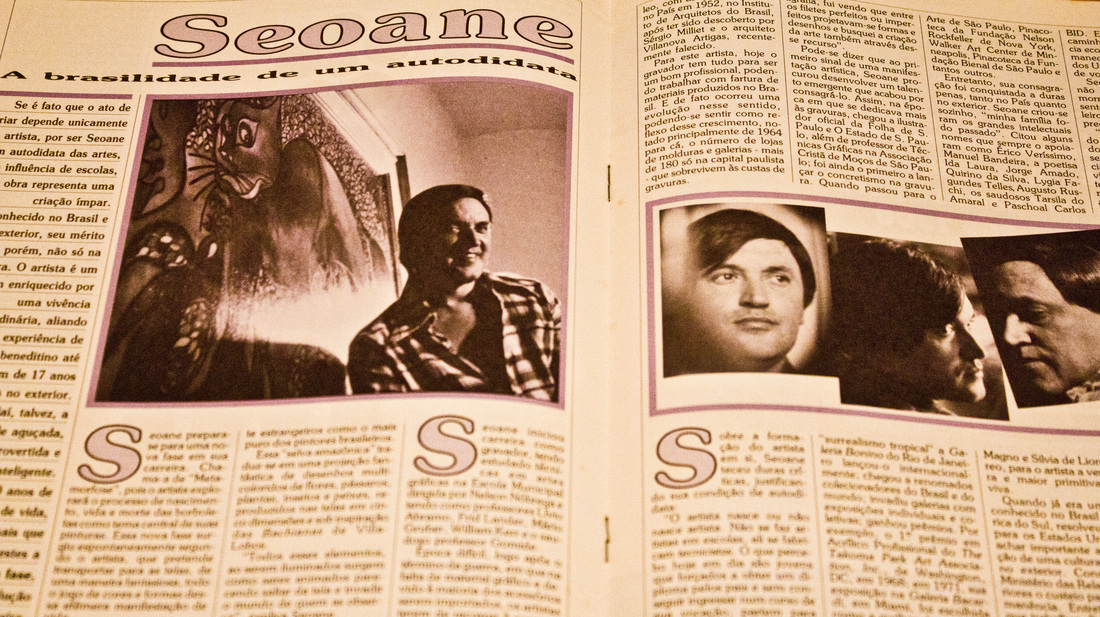CHILDHOOD AND YOUTHSeoane was born in the city of Santos (Brazil) in 1930 being the youngest son of a working class family of imigrants (Spanish dad and Portuguese mother). At the age of 14, he runs away from home and goes to São Paulo seeking opportunities to develop his artistic skills.
In 1944 he was admited at the Professor Nelson Nobrega Graphic Arts School by the means of a competition that granted him a full scholarship for a 4 year period. He had as masters for Graphic Techniques Lívio Abramo and Mário Gruber, Antônio Gomide for Anathomy and Wolfgang Pfeiffer for Art History. Discovered by the art critic Sérgio Milliet, he had his first solo exhibition in 1950 at the Brazilian Institute of Architects in São Paulo. |
1950's
|
1960's
|
RETURN AND ACCLAIM IN BRAZIL
In 1972 Seoane returns to Brazil and, in his continuos search for new inspirations, lives the next few years in different cities like Porto Alegre, Rio de Janeiro, Vitória till his eventual return to the city of São Paulo where he'll live till his last days closer to his family. In each of these cities he organizes and receives invitations for solo and collective exhibitions within their major galleries and art halls.
Within the Brazilian territory, Seoane have received many awards. Some of the most notable awards given for his work both in graphic arts and oil painting were the bronze medal (1957), silver medal (1959 and 1961), gold medal (1965) and acquisition award (1960 and 1962) at the Modern Art Salon of São Paulo and his participations at the IV and XIV National Modern Art Salon and the VIII and IX São Paulo Bienal of Arts.
For the propagation of the Brazilian art abroad Seoane have received the commendations of D. João VI from the Heraldry and Medals Institute of São Paulo, the Civic and Cultural Merit Cross from the Brazilian Association of Heraldry and Medals and the Anchieta Medal given by the São Paulo City Council.
In the year of 1987, after a few years struggling against cancer, Seoane dies in the city of São Paulo.
Within the Brazilian territory, Seoane have received many awards. Some of the most notable awards given for his work both in graphic arts and oil painting were the bronze medal (1957), silver medal (1959 and 1961), gold medal (1965) and acquisition award (1960 and 1962) at the Modern Art Salon of São Paulo and his participations at the IV and XIV National Modern Art Salon and the VIII and IX São Paulo Bienal of Arts.
For the propagation of the Brazilian art abroad Seoane have received the commendations of D. João VI from the Heraldry and Medals Institute of São Paulo, the Civic and Cultural Merit Cross from the Brazilian Association of Heraldry and Medals and the Anchieta Medal given by the São Paulo City Council.
In the year of 1987, after a few years struggling against cancer, Seoane dies in the city of São Paulo.







